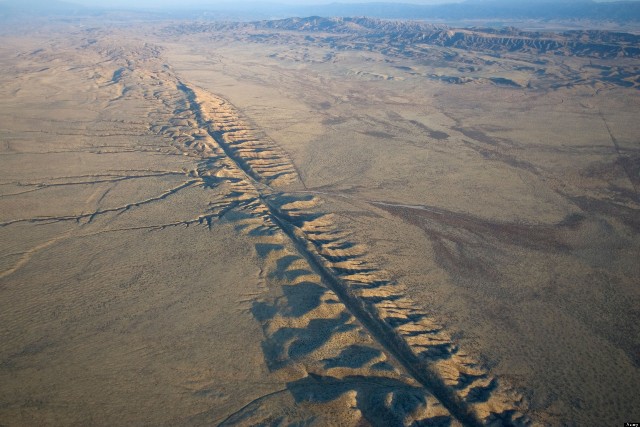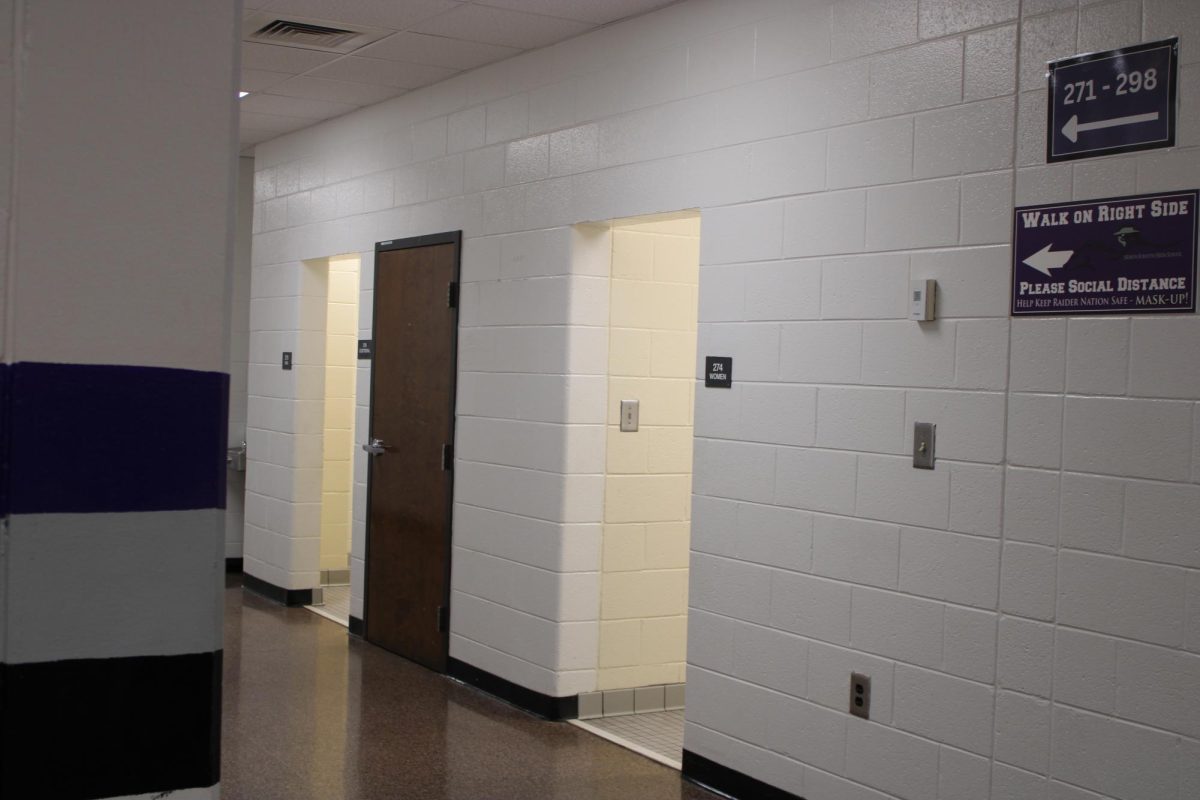San Andreas Fault Expecting Huge Earthquake
This photo shows the San Andreas Fault in aerial view from the Carrizo Plain. Photo by Jack Cloherty.
November 1, 2016
On Monday, Oct. 3, small tremors of an earthquake, highest being a measure of 4 out of 10 on the Richter Scale, off the coast of Bombay Beach in the San Andreas Fault rumbled for more than 24 hours straight. Not many people on land felt the shaking, but seismologists have swarmed to the area for investigation. These small quakes have scientists warning that the likelihood of a bigger earthquake is to a much greater degree now. These small rumbles have increased the chance of a major earthquake to 1 out of 100; whereas on a normal day without any sign of a quake, it would be as low as 1 in 3,000. Seismologists will be eagerly on guard for the next few days awaiting its rupture. Professionals predict the big earthquake expected from the fault would cause up to 1,800 deaths, 50,000 injuries and $200 billion of damage. Many fear that an earthquake of this size would result in a domino effect all along the fault, which would trigger the collapse of the San Andreas in its entirety.
The San Andreas Fault is an extensive 800 mile crevasse in the Earth formed by the division of the Pacific and Tectonic plates in San Andreas, Calif. First identified in 1895, Professor Andrew Lawson discovered only the northern portion. However, after the 1906 major scale San Francisco earthquake -felt in Santa Monica Bay, Imperial Valley, Nevada, and Oregon- Lawson proclaimed that the fault also ran deep into Southern California. Scientists have previously estimated that the southernmost part of the fault has not ruptured since as early as 1680 — more than 330 years ago. They have also predicted that a large scale earthquake (even larger than the 1906 quake) occurs every 200 year. Is it not time for yet another big quake? Well, many are anticipating a life-changing earthquake within the next few days.
Former California resident and freshman at North Forsyth High School, Ella Hayes, shares her thoughts on the subject. “I mean I don’t want my cousins to get hurt or anything,” she states, “but they are constantly predicting huge earthquakes in the area that never end up happening. I think people in California are prepared and know what to do since they live on such a huge fault so hopefully people stay safe.” Hayes knows the reality of the many earthquake warnings in California, given she has lived there and has faith that residents will stay safe in this time.
As of Oct. 5, 2016, scientists have surprisingly discovered yet another fault that runs parallel to the San Andreas and lies under the eastern part of the Salton Sea, stretching on for 35 miles. It has been named the ‘Salton through Fault’ and has experienced up to 200 tremors in the past few days, further testifying the soon-to-be rupture of the San Andreas. It is still being investigated, and not much is known about it at the moment due to it being underwater and has made imaging hard for seismologists to use. The main fear is that the San Andreas is releasing some of its strain to this newfound fault. This may cause the two to blow at the same time, resulting in even more damage and casualties than previously predicted.
At this point, there is no way anyone can prevent the quakes, so the only thing anyone can do is keep a close eye on the tremors. Hopefully, the two faults will calm down and stay that way just as the San Andreas has in previous situations where there have been similar tremors.




